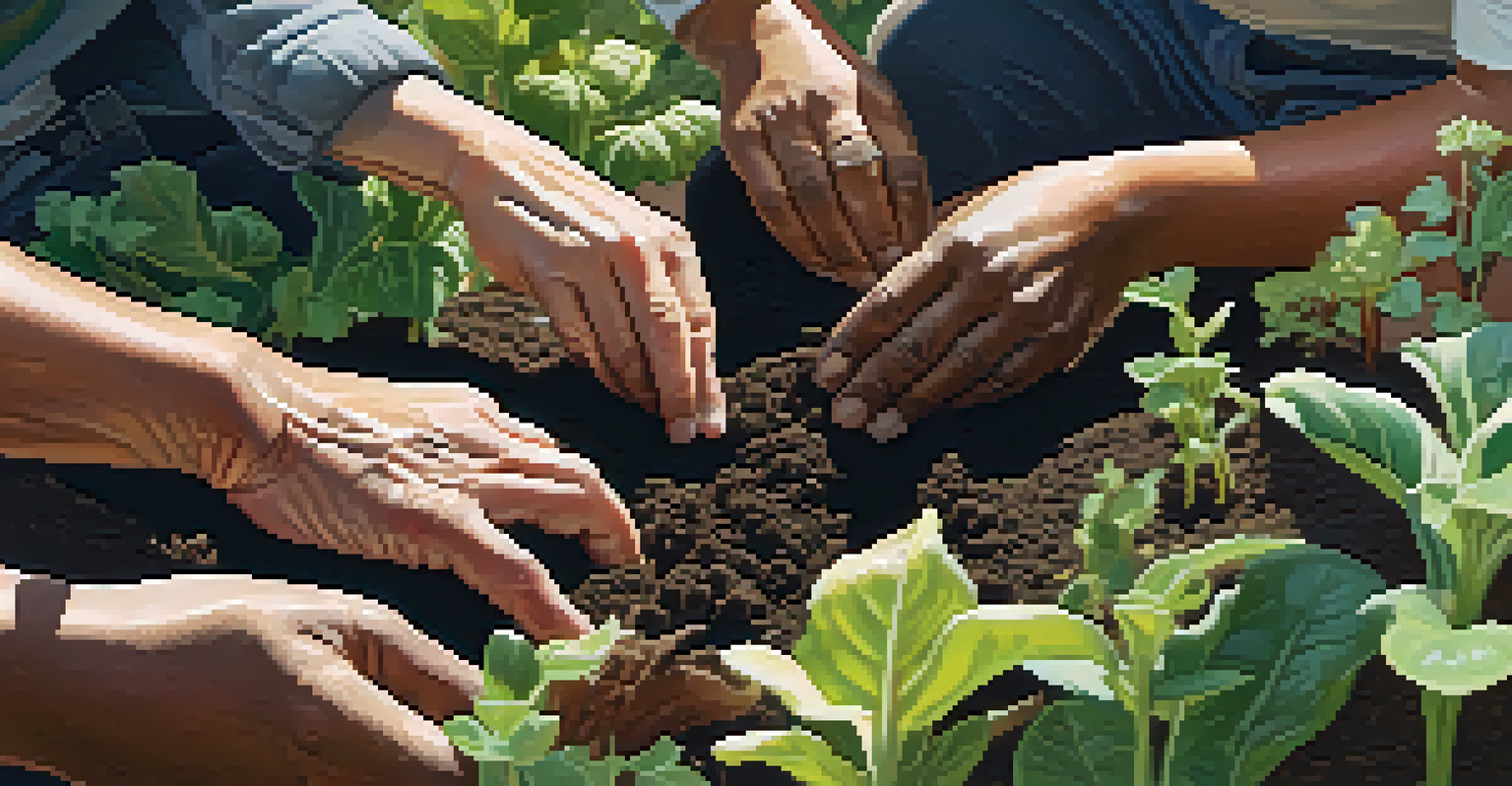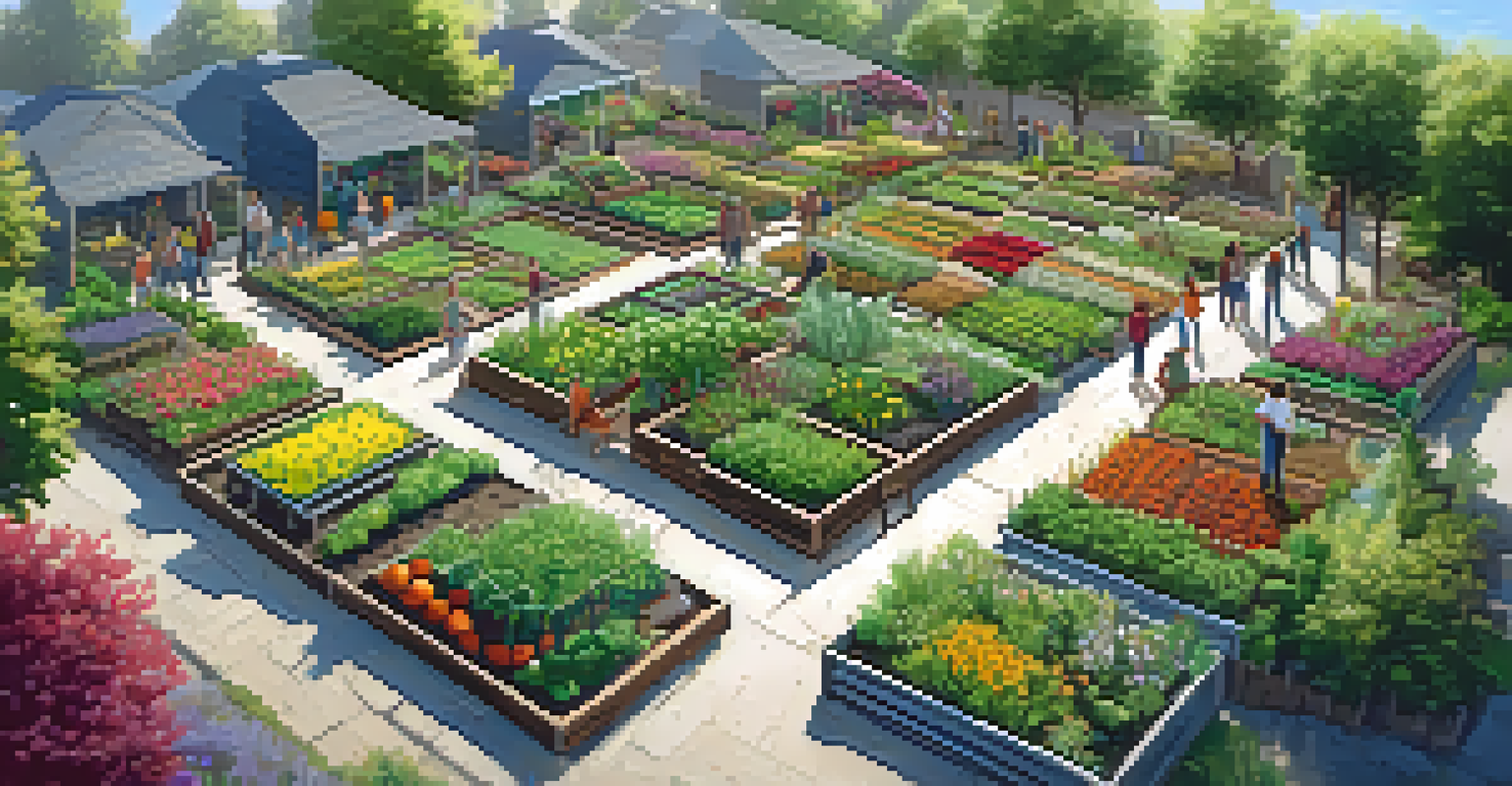Physical Activity and Community Gardening: A Healthy Duo

The Benefits of Physical Activity for Everyone
Physical activity is more than just a way to stay fit; it's a key component of overall health. Engaging in regular movement can improve cardiovascular health, boost mood, and enhance mental clarity. Whether it's a brisk walk or dancing in your living room, every bit counts towards a healthier lifestyle.
To forget how to dig the earth and to tend the soil is to forget ourselves.
Many people struggle to find ways to incorporate physical activity into their lives. The good news is that it doesn't have to be a chore. Finding enjoyable activities, like playing sports or gardening, can make exercise feel less like a task and more like a rewarding experience.
Incorporating physical activity into your routine can also foster a sense of community. When people come together to exercise or participate in activities, they build social connections that can lead to lasting friendships and support.
Why Community Gardening is Gaining Popularity
Community gardening is a growing trend that brings people together to cultivate plants and vegetables. It serves as a communal space where individuals can share resources, knowledge, and, of course, the joy of gardening. Plus, the fresh produce harvested can be a game-changer for local families.

One of the great aspects of community gardening is its accessibility. People of all ages and abilities can participate, whether they have green thumbs or are just starting out. This inclusivity not only promotes physical activity but also encourages learning and skill-sharing among community members.
Physical Activity Boosts Health
Regular physical activity, like gardening, enhances cardiovascular health, mood, and mental clarity.
Gardening can also be therapeutic. As participants dig in the soil, they reap the benefits of spending time outdoors, which has been shown to reduce stress and anxiety. This blend of physical activity and mental relaxation makes community gardening a unique and fulfilling experience.
How Gardening Encourages Physical Activity
Gardening is a fantastic way to engage in physical activity without it feeling like a workout. From digging and planting to weeding and harvesting, each task involves movement that can enhance strength and flexibility. It’s an enjoyable way to get your heart rate up while reaping the benefits of nature.
The best time to plant a tree was twenty years ago. The second best time is now.
Moreover, the variety of tasks in gardening means you can mix things up. This diversity keeps the experience fresh and exciting, preventing boredom that often comes with traditional exercise routines. Plus, you can easily adapt your gardening activities to match your fitness level.
The best part? You're not just benefiting yourself. As you garden, you're contributing to the community’s well-being by providing fresh produce and creating green spaces that everyone can enjoy. It's a win-win situation that promotes both personal health and community spirit.
Community Gardens: A Hub for Social Interaction
Community gardens serve as social hubs where individuals from diverse backgrounds come together. These spaces foster collaboration, encouraging participants to share gardening tips, recipes, and stories, creating a sense of belonging. This camaraderie can be incredibly uplifting and motivating.
Moreover, social interaction in these gardens can lead to new friendships and support networks. As people work side by side, they bond over shared goals, challenges, and successes. These connections can also encourage individuals to be more physically active, as they become motivated by their peers.
Community Gardens Foster Connection
These gardens create social hubs where individuals can share experiences, build friendships, and support one another.
Engaging with others in a community garden can also enhance mental well-being. Building relationships and participating in group activities reduces feelings of loneliness and isolation, creating a healthier mental atmosphere for everyone involved.
The Environmental Benefits of Community Gardening
Community gardening isn’t just beneficial for people; it also positively impacts the environment. These gardens help improve air quality, promote biodiversity, and reduce urban heat. By creating green spaces in densely populated areas, gardeners are making their neighborhoods more livable.
Furthermore, gardening encourages sustainable practices. Participants often learn about organic gardening methods, composting, and water conservation, which can lead to more environmentally friendly habits in their daily lives. This education can extend beyond the garden, influencing how participants view their own consumption and waste.
In addition, community gardens can help mitigate food deserts by providing fresh produce to neighborhoods that lack access to grocery stores. This not only improves the dietary choices of residents but also empowers communities to take charge of their food sources.
Tips for Starting a Community Garden
Starting a community garden can seem daunting, but it can be a rewarding project with the right approach. First, gather a group of interested individuals who share a passion for gardening. It’s essential to establish a clear vision and set goals, so everyone is on the same page from the get-go.
Next, find a suitable location for your garden. This could be an unused plot of land, a park, or even a schoolyard. Ensure that the chosen site has adequate sunlight, water access, and is safe for participants. Once the site is secured, begin planning the layout and types of plants you want to grow together.
Gardening Benefits Environment
Community gardens improve air quality and promote biodiversity while providing fresh produce to local neighborhoods.
Finally, involve the community from the outset. Hosting workshops, planting days, and social events can build excitement and encourage participation. The more people feel invested in the garden, the more likely they are to contribute actively and reap the benefits of this healthy endeavor.
The Future of Physical Activity and Gardening
As more people recognize the importance of physical activity and mental well-being, community gardening will likely continue to thrive. These spaces offer an excellent opportunity to blend exercise with the joy of nurturing plants and connecting with others. The growing interest in sustainability and local food sources further supports this trend.
Innovative initiatives, such as urban farming and vertical gardens, are emerging, making gardening even more accessible to urban dwellers. This means more individuals can enjoy the benefits of gardening, regardless of their living situation. As these practices evolve, they can inspire a new generation of gardeners.

Ultimately, the partnership between physical activity and community gardening presents a bright future. By cultivating both our bodies and our communities, we can foster healthier lifestyles and create lasting connections that benefit everyone involved.